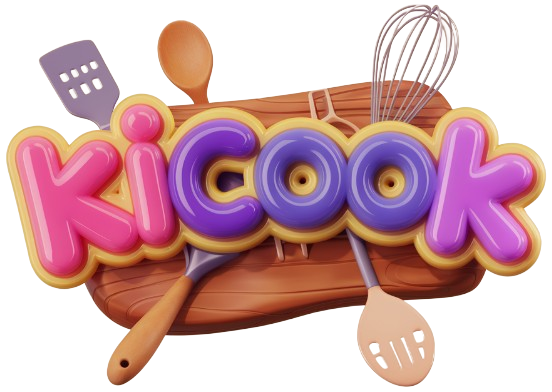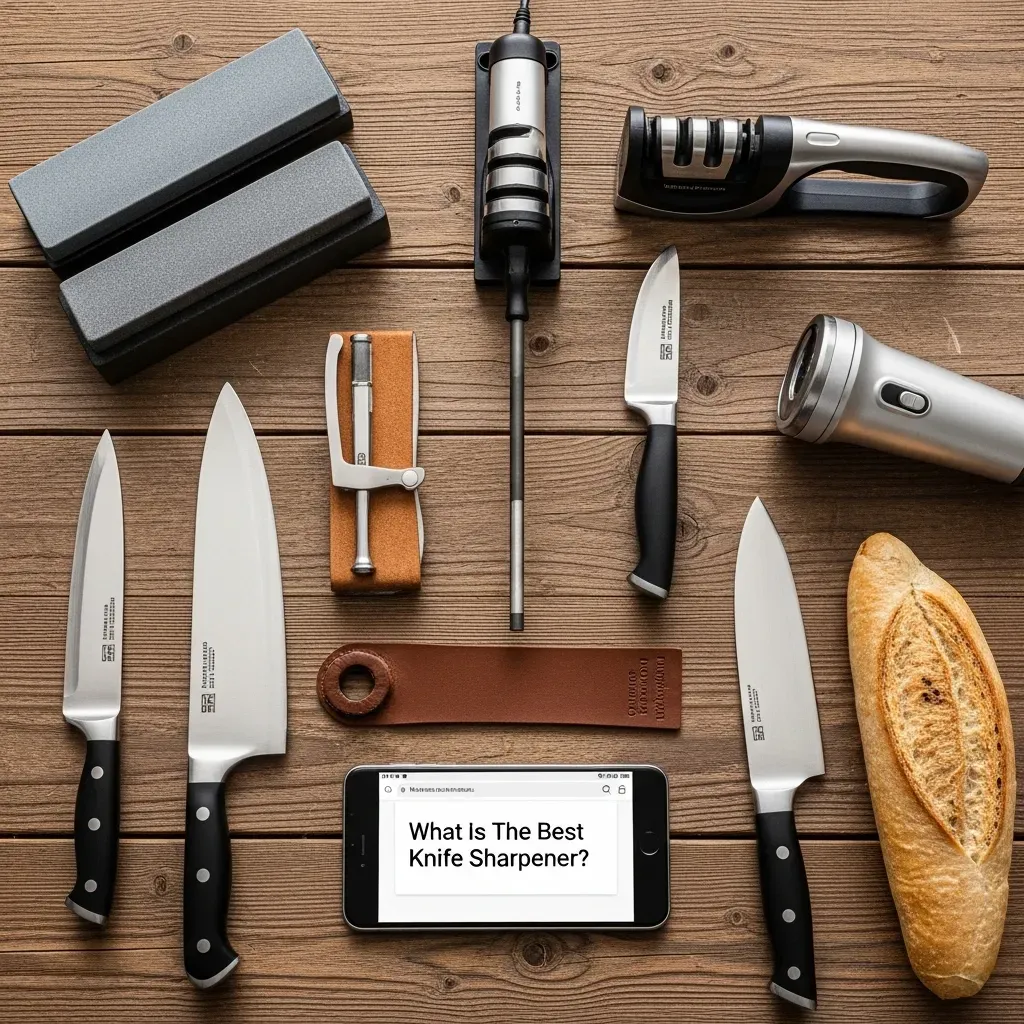I’ve spent years in the kitchen, and I know the frustration of trying to slice a tomato with a dull blade. It’s not just annoying it’s unsafe. A sharp knife makes cooking enjoyable and efficient.
Over time, I’ve tested dozens of sharpeners, from simple handheld tools to professional systems. Through trial and error, I’ve learned what works and what doesn’t. In this article, I’ll share my experiences to help you find the perfect sharpener for your kitchen. Whether you’re a beginner or a seasoned chef, you’ll discover options that fit your lifestyle.
Why Sharp Knives Matter
A sharp knife glides through food with little effort. It gives you clean cuts and better control. Dull knives, on the other hand, can slip and cause accidents. Regular sharpening keeps your blades in top shape. I remember when I first started cooking; I didn’t think much about sharpening. But after a few close calls, I realized that maintaining my knives was essential. Sharpening isn’t just about performance it’s about safety and extending the life of your tools.
Types of Knife Sharpeners
There are several kinds of sharpeners, each with pros and cons. Let’s break them down.
Manual Pull-Through Sharpeners
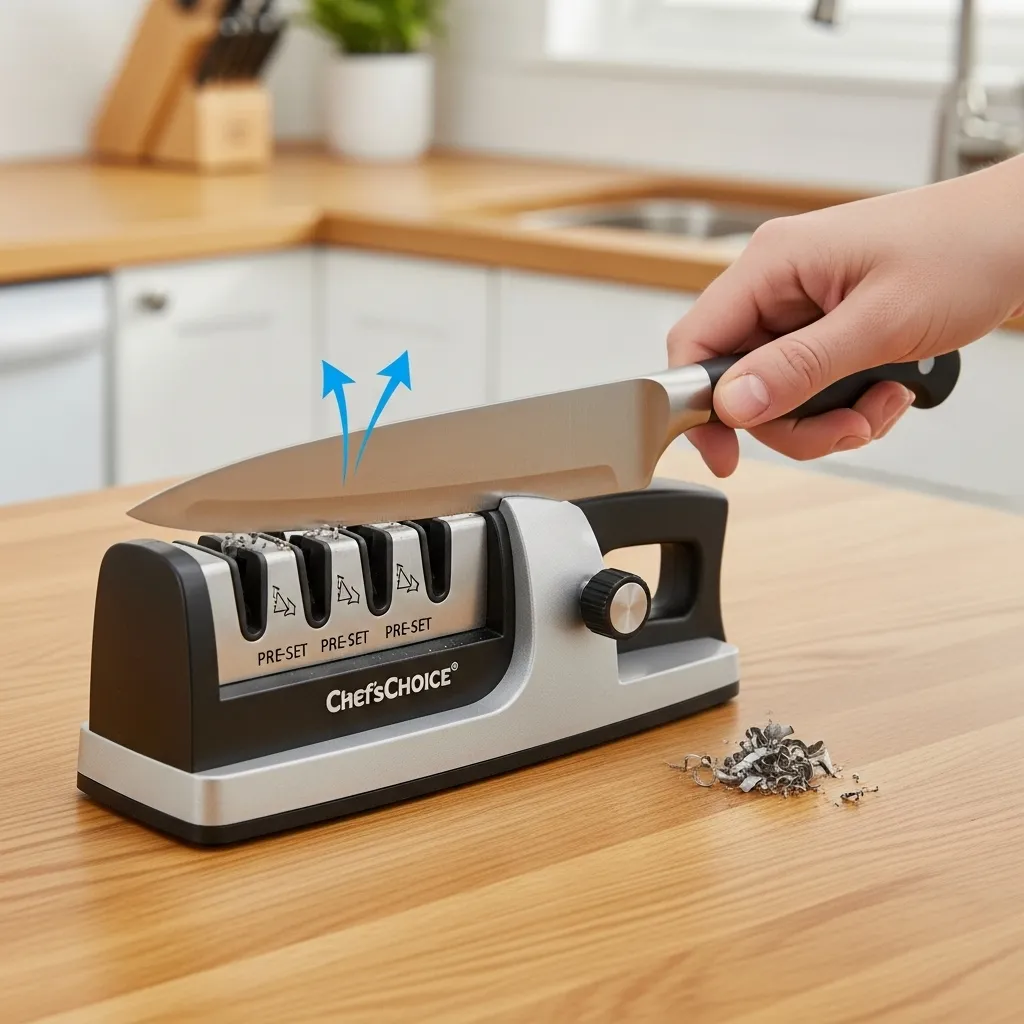
These are great for beginners. You pull the knife through slots with pre-set angles. They’re affordable and user-friendly. I’ve used models from brands like Chef’Choice and found them reliable for quick touch-ups. However, they can remove more metal than necessary if used too often. For most home cooks, a manual pull-through sharpener is a solid choice for maintaining edges between more thorough sharpening sessions.
Electric Sharpeners
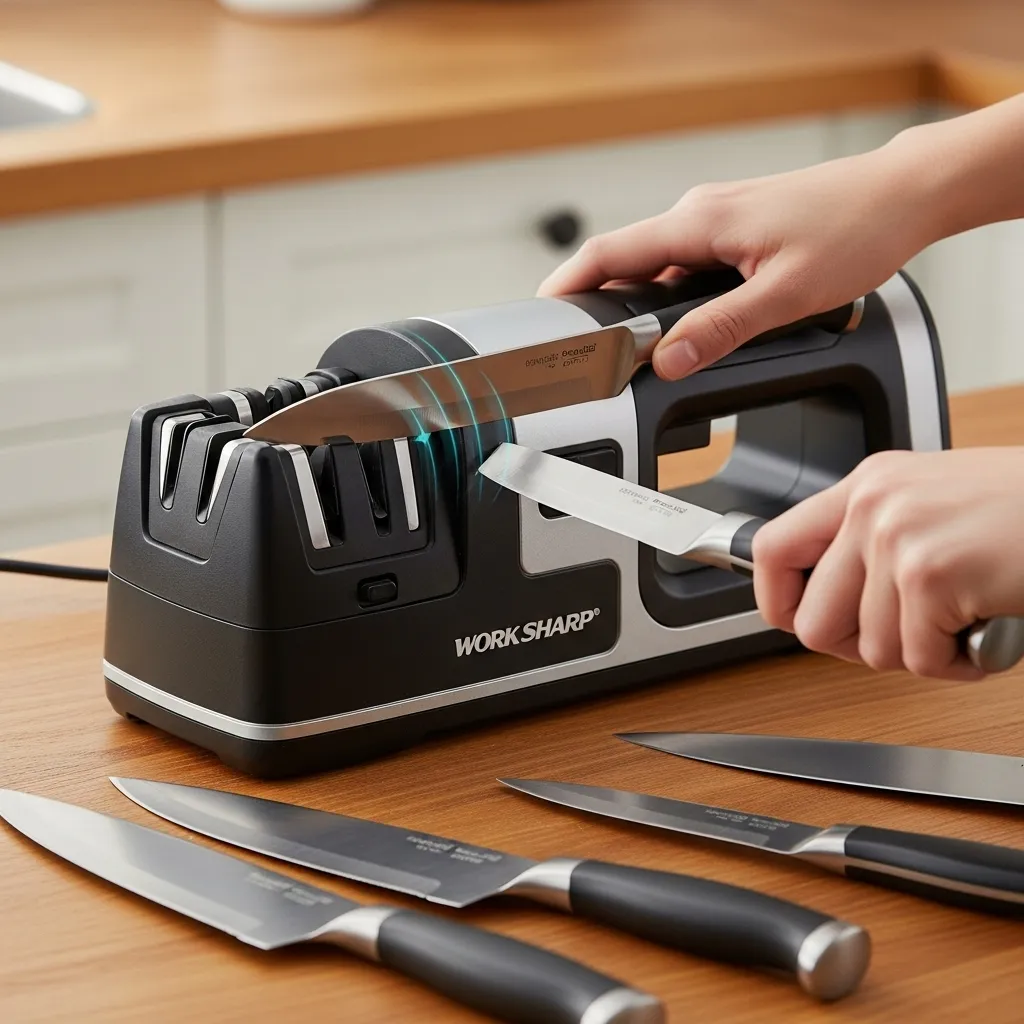
Electric models are fast and efficient. They often have multiple stages for grinding, honing, and polishing. I own a Work Sharp electric sharpener that I use when I need to sharpen multiple knives quickly. It’s consistent and easy to operate. The downside is that they can be bulky and require power. If you have a lot of knives or cook frequently, an electric sharpener might be worth the investment.
Whetstones
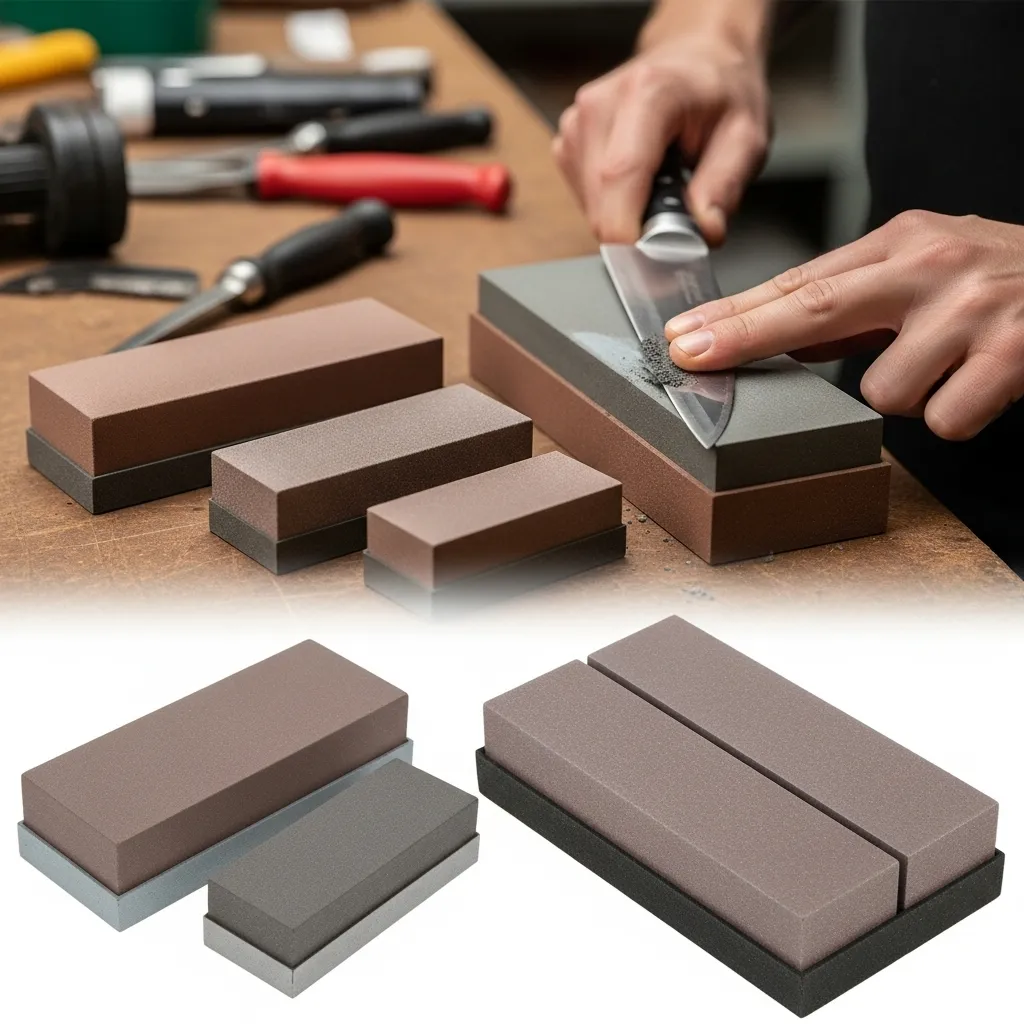
Whetstones, or sharpening stones, offer precision. They come in various grits, from coarse to fine. Using a whetstone takes practice, but it gives you control over the angle and edge. I learned to use a whetstone from a local butcher, and now it’s my go-to for my best knives. It’s a skill that pays off with incredibly sharp edges. Start with a combination stone—it has two grits on one block.
Sharpening Steels
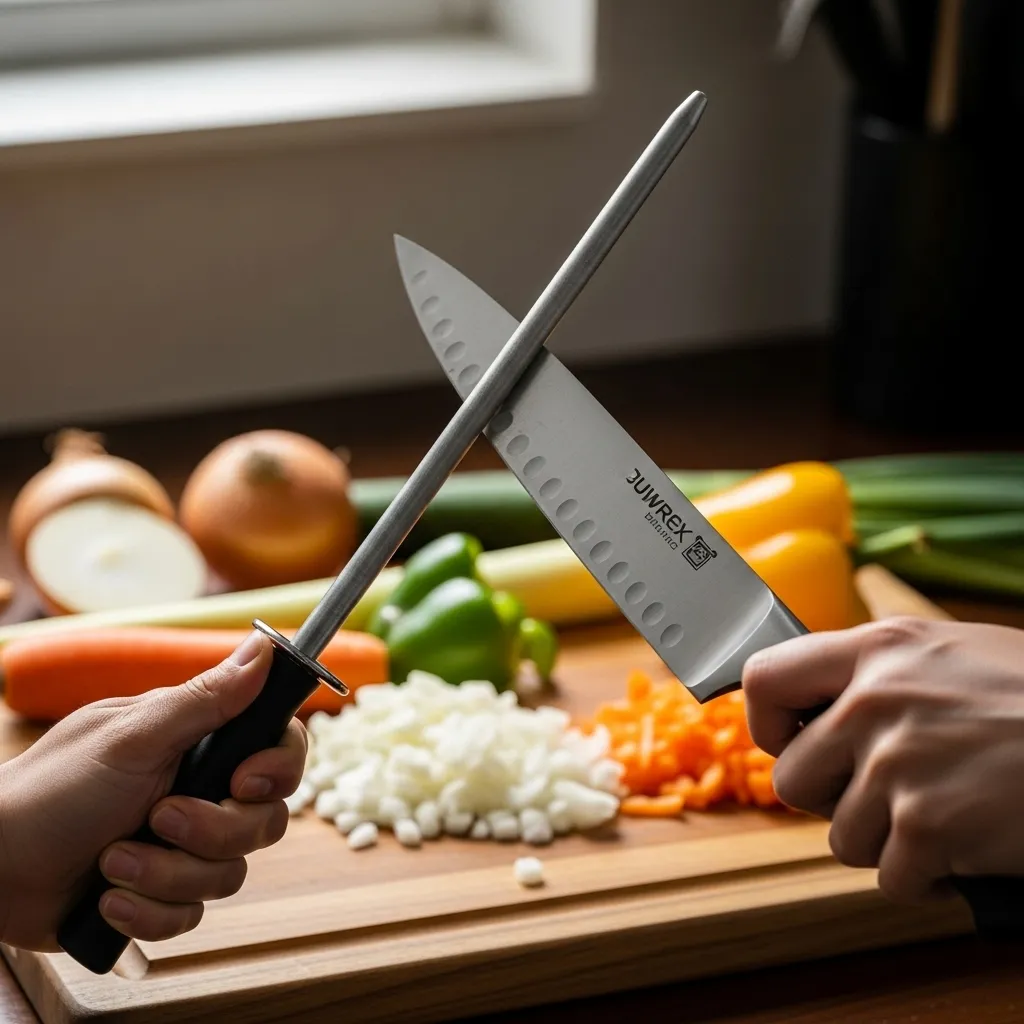
A sharpening steel is for honing, not sharpening. It realigns the edge between sharpenings. I use my steel every time I cook. It’s a simple tool that keeps knives performing well. Remember, honing doesn’t remove metal; it straightens the blade.
Guided Sharpening Systems
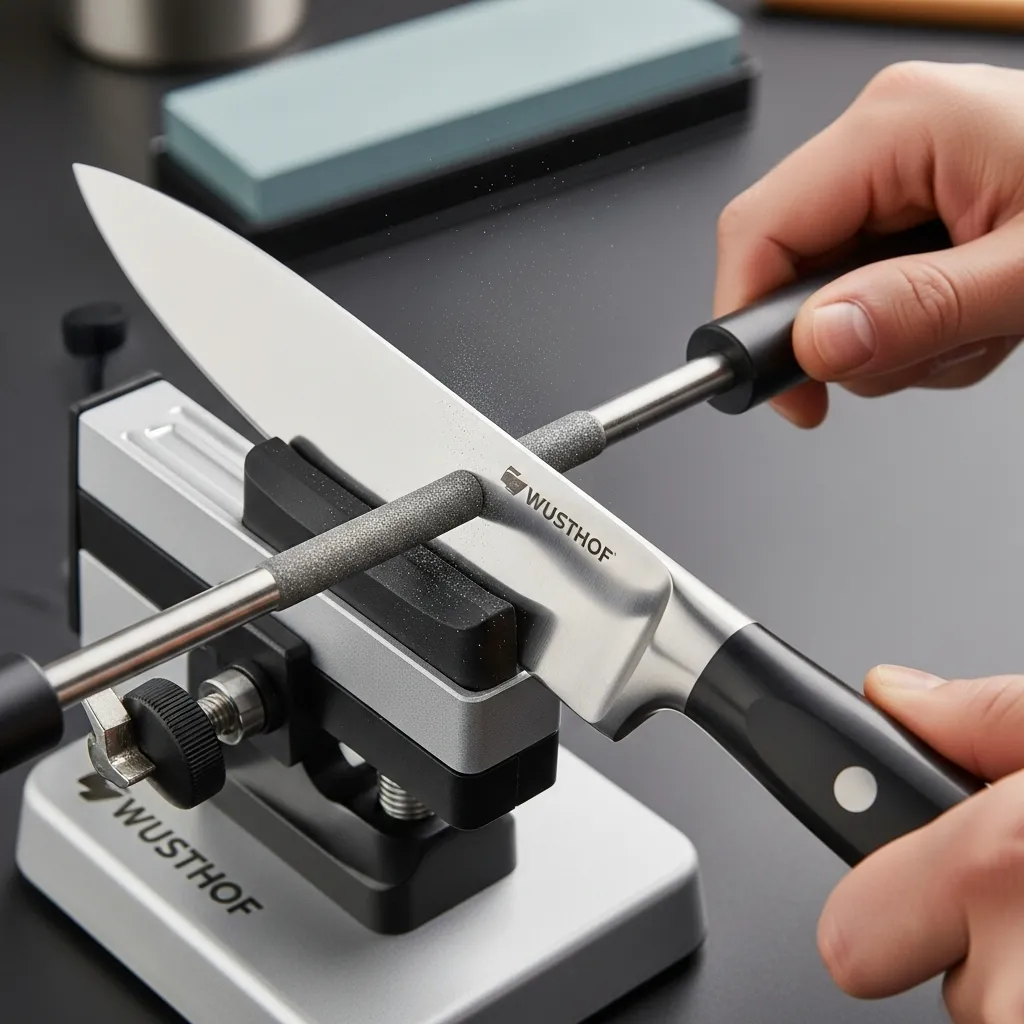
These systems hold the knife at a fixed angle while you use a rod or stone. They’re excellent for consistency. I tried a guided system from Wusthof and was impressed with the results. It’s a step up from pull-through sharpeners and easier than freehand whetstones for beginners.
My Top Picks
Based on my tests, here are my favorites.
- For Beginners: Chef’Choice Manual Pull-Through – It’s straightforward and effective. I’ve recommended it to friends who are new to sharpening.
- For Enthusiasts: Work Sharp Electric Sharpener – This model handles different blade types and delivers a sharp edge fast.
- For Pros: Norton Whetstone – With practice, it produces a razor-sharp edge. I use it for my high-carbon steel knives.
How to Choose the Best Knife Sharpener
Consider your needs. Ask yourself:
- How often do you cook?
- What types of knives do you own? (e.g., stainless steel, ceramic)
- What’s your budget?
- Are you comfortable learning new skills?
For daily use, a manual or electric sharpener is practical. If you enjoy hands-on work, a whetstone could be rewarding. I always suggest starting with something simple and upgrading as you gain confidence.
Using Your Sharpener Safely
Safety is key. Always read the instructions. Keep your fingers away from the blade. I’ve nicked myself a few times by rushing. Take your time and focus. For electric sharpeners, unplug them when not in use. With whetstones, wet the stone first to reduce friction.
Maintenance Tips
Clean your sharpener regularly to remove metal filings. Store it in a dry place. I check my tools every month for wear. Proper care ensures they last longer and work better.
“A sharp knife is the cook’s best friend.” – Julia Child
“The right angle makes all the difference in sharpening.” – Bob Kramer
“Honing should be part of your daily routine.” – Gordon Ramsay
Frequently Asked Questions
How often should I sharpen my knives?
It depends on use. For home cooks, sharpening every few months is fine. Honing with a steel should be done weekly.
Can I sharpen ceramic knives?
Yes, but use a diamond sharpener. Ceramic is hard and requires a diamond abrasive.
What’s the best angle for sharpening?
Most kitchen knives are best at 15-20 degrees. Check your knife’s manufacturer guidelines.
Are expensive sharpeners worth it?
Not always. I’ve found budget options that work well. Focus on features and reviews.
Can a sharpener damage my knives?
If used incorrectly, yes. Follow instructions and start with a less aggressive grit.
Conclusion
Finding the best knife sharpener is about matching the tool to your needs. I’ve shared what I’ve learned from my own kitchen experiences. Whether you choose a manual, electric, or whetstone, regular maintenance will keep your knives sharp and safe. Start with a simple option and build from there. Happy sharpening!
